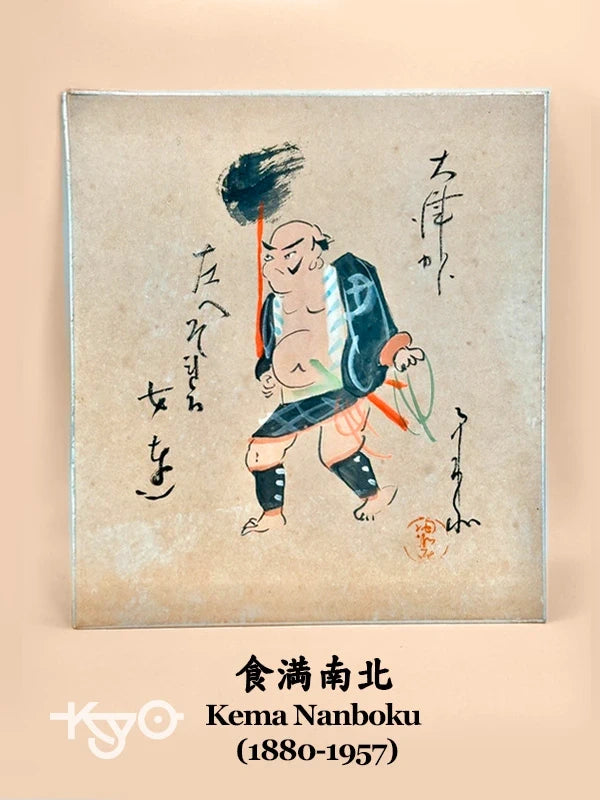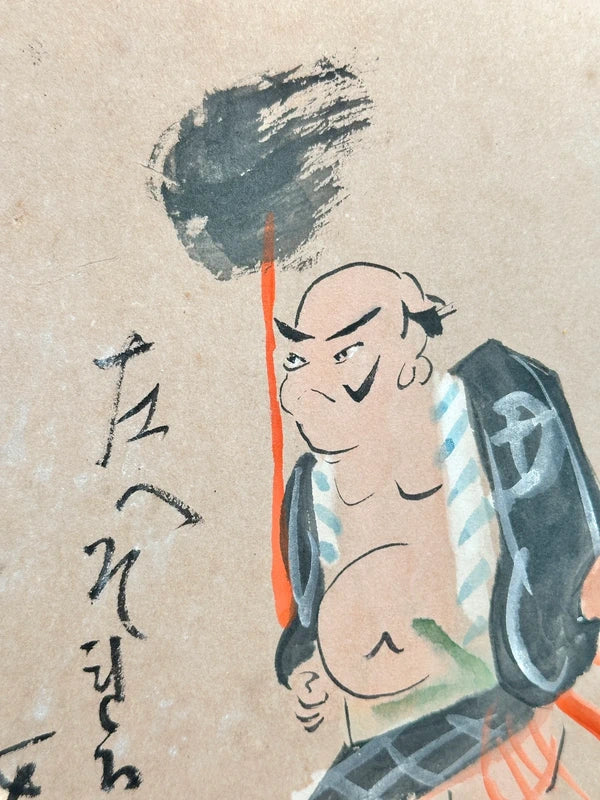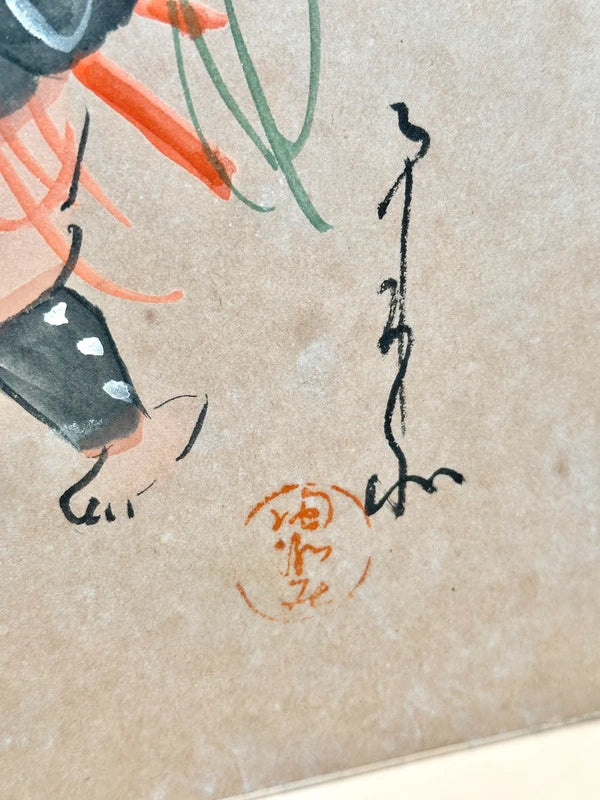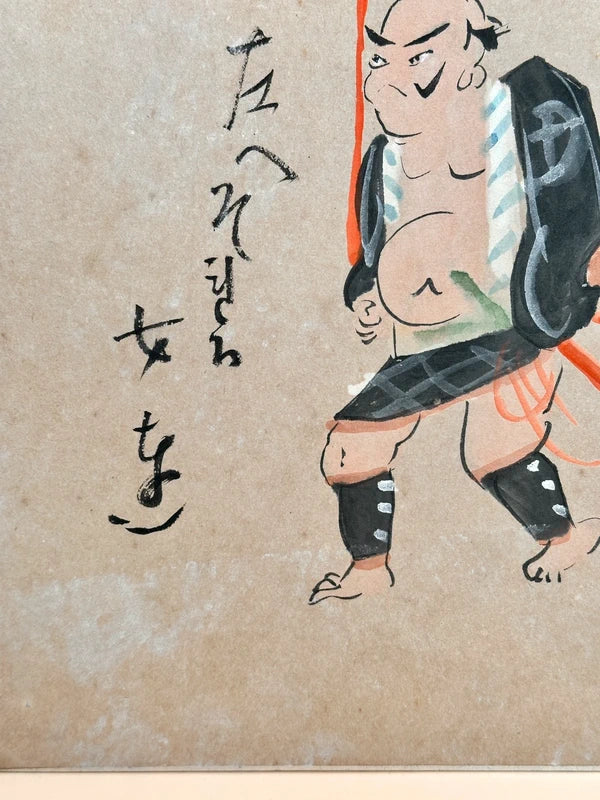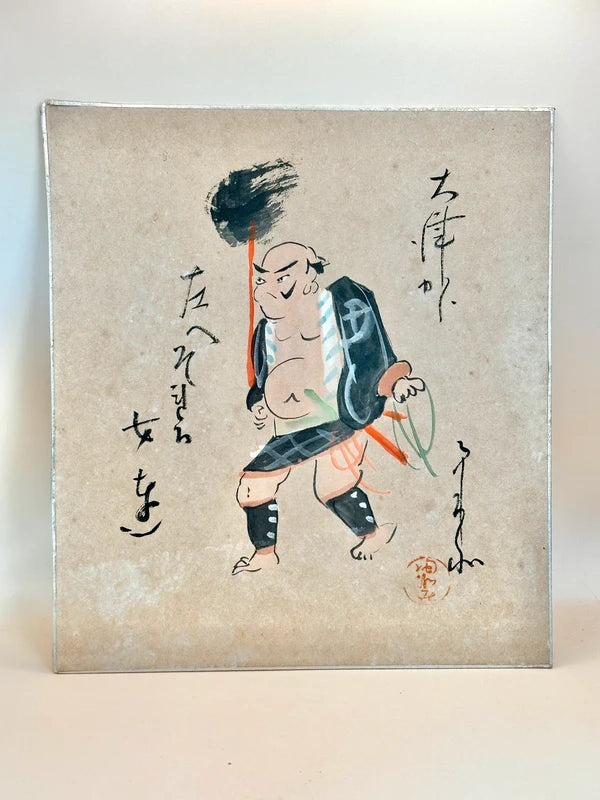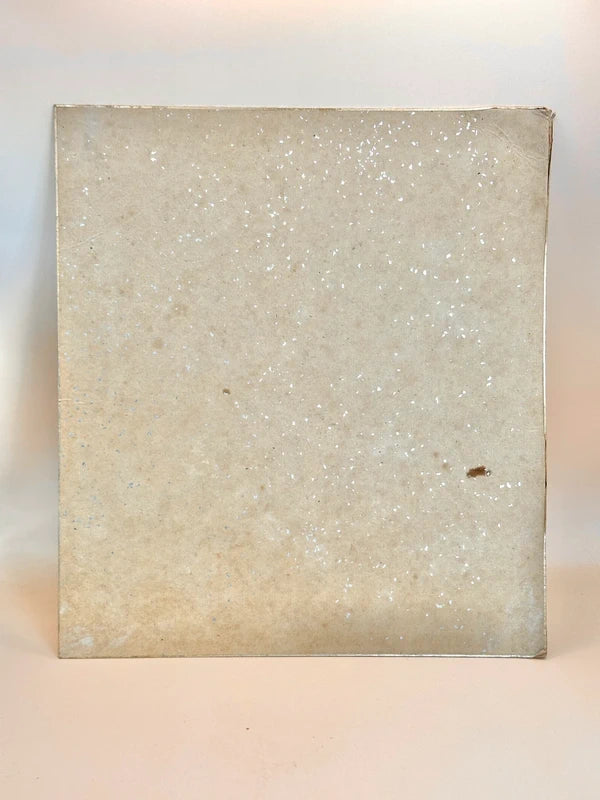SHP122 - Original shikishi by Kema Nanboku 食満南北
SHP122 - Original shikishi by Kema Nanboku 食満南北
A 100 years old original hand-painted vintage shikishi card by Kema Nanboku (食満南北) captures the essence of traditional Japanese theatrical expression with playful flair. The illustration depicts Yakkō (奴) from Ōtsu-e, refers to a type of retainer or servant of a samurai, often depicted with exaggerated features and a theatrical pose. Dressed in short hakama and a half-coat. Holding tools or ropes, shown in a dramatic walking stance or exaggerated action symbolizing the lower-ranking warrior class or mocking rigid hierarchy. It's also linked to kabuki theatre and parody culture in Edo Japan.
Kema Nanboku born Teiji in Sakai City, Osaka, on July 31, 1880, was a renowned kabuki playwright and multi-talented artist of the Meiji, Taisho, and Showa periods. Originally the son of a sake brewer, his lifelong love of theater eventually led him to become an apprentice under the novelist Murakami Nairoku and later a disciple of famed kabuki playwright Fukuchi Ochi at Tokyo's Kabukiza Theater.
In 1906, Nanboku returned to Osaka and joined the Shochiku theater company through the invitation of kabuki actor Kataoka Gato III. With the support of Hayashi Chozaburo, he began writing kyogen plays for Nakamura Ganjiro I, ultimately becoming one of the most prominent playwrights in Kansai Kabuki. His notable debut piece, Juraku Monogatari, was written in just three days and premiered at Minamiza in 1911. Over his career, Nanboku adapted classics by Chikamatsu Monzaemon, as well as modern literature by Tanizaki Junichiro and Akutagawa Ryunosuke, leaving behind over 100 works.
Nanboku was also a gifted senryu poet, calligrapher, and painter, producing numerous shikishi and scrolls featuring witty or introspective compositions. His artistic sensibility extended beyond the stage, showcasing a rich appreciation for visual and literary expression.
Size: 24 x 27cm
Share
